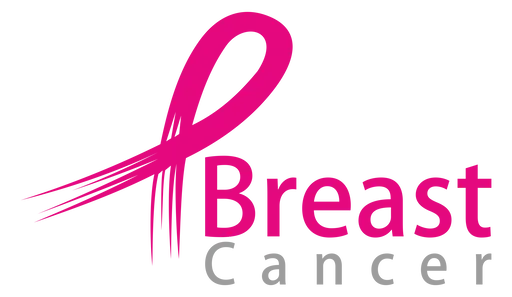Invasive Lobular Carcinoma (ILC) is the second most common type of breast cancer, originating in the milk-producing lobules of the breast. It often spreads to surrounding tissues, making early detection critical for successful treatment. Symptoms of ilc breast cancer treatment can be subtle, including thickening of the breast or changes in texture. Risk factors include age, hormone replacement therapy, and a family history of breast cancer. Causes are often linked to genetic mutations. Treatment options typically involve surgery, radiation, chemotherapy, and hormone therapy, depending on the stage of cancer. Early detection improves the chances of a full recovery, making regular screenings essential for those at higher risk.
Overview
Invasive Lobular Carcinoma (ILC) is a distinct type of breast cancer that can be difficult to detect early due to its tendency to spread out within breast tissue rather than forming a distinct lump. This subtle growth pattern makes regular screenings crucial for early diagnosis. Symptoms may include thickening or changes in breast texture rather than noticeable lumps. Risk factors include age, hormone therapy, and family history. Causes often relate to genetic mutations. Treatment typically involves surgery, radiation, and hormone therapy. Early detection is key for better outcomes and successful recovery.
What is Invasive Lobular Breast Cancer?
Invasive lobular carcinoma (ILC) is the second most common type of breast cancer, accounting for about 10% of all breast cancer cases. It begins in the milk-producing lobules of the breast and spreads into surrounding tissue, lymph nodes, and potentially distant parts of the body. The key to effective invasive lobular breast cancer treatment lies in early detection, especially at stage 1, when the cancer is still small and localized.
ILC Breast Cancer Symptoms
The ilc breast cancer symptoms can be different from other types of breast cancer, making it crucial to stay vigilant for any unusual changes in the breast. Common symptoms include:
- A thickening or fullness in one part of the breast.
- Changes in breast texture or skin appearance.
- Nipple inversion or changes in the shape of the nipple.
- Unexplained breast swelling or discomfort.
- Changes in breast size or shape that are not related to the menstrual cycle.
Because these symptoms are often subtle, regular breast self-exams and routine screenings are essential for early detection.
ILC Breast Cancer Treatment
Invasive Lobular Carcinoma (ILC) is treated through a personalized combination of therapies based on the stage and characteristics of the cancer. Treatment options include:
- Surgery: The primary treatment for ILC, which involves either a lumpectomy (removal of the tumor) or a mastectomy (removal of the entire breast). Depending on the extent of the disease, lymph nodes may also be removed.
- Radiation Therapy: Often used post-surgery, radiation targets any remaining cancer cells in the breast or surrounding tissues, reducing the risk of recurrence. It’s particularly common after a lumpectomy.
- Chemotherapy: This systemic treatment is administered to kill rapidly growing cancer cells. It may be recommended before surgery (neoadjuvant chemotherapy) to shrink large tumors or after surgery (adjuvant chemotherapy) to reduce the chance of the cancer returning.
- Hormone Therapy: Many ILC tumors are hormone receptor-positive, meaning they grow in response to hormones like estrogen and progesterone. Hormone therapies, such as Tamoxifen or Aromatase Inhibitors, block these hormones, slowing or stopping cancer growth. Hormone therapy is a long-term treatment, often prescribed for 5 to 10 years to prevent recurrence.
- Targeted Therapy: Some ILC cases may involve specific genetic mutations or protein overexpression, like HER2. In such cases, targeted therapies like Herceptin or CDK4/6 inhibitors can be used to focus on those mutations and offer a more personalized approach to treatment.
- Clinical Trials: Patients with ILC may also consider participating in clinical trials for access to the latest treatments and therapies under investigation.
The approach to ILC treatment is multi-disciplinary, involving oncologists, surgeons, radiologists, and pathologists, ensuring a comprehensive plan tailored to the individual’s specific needs. Early detection and personalized treatment are crucial for achieving successful outcomes and improving survival rates.
Causes
The exact cause of carcinoma in breast tissue is not fully understood, but several factors can increase the risk of developing invasive lobular carcinoma:
- Age: Women over the age of 55 are more likely to develop ILC.
- Genetics: Mutations in the BRCA1 or BRCA2 genes, along with a family history of breast cancer, significantly increase the risk.
- Hormonal Factors: Long-term use of hormone replacement therapy (HRT) or extended exposure to estrogen can elevate the risk.
- Previous Breast Cancer: Women who have already had breast cancer are at a higher risk of developing ILC.
These factors highlight the importance of understanding your personal risk profile and discussing preventive measures with your healthcare provider.
Risk
- Genetic predisposition: Inherited mutations in breast cancer-related genes.
- Age: Higher risk in women over 55.
- Hormonal influences: Prolonged estrogen exposure.
- Lifestyle factors: Obesity, alcohol consumption, and a lack of physical activity can also play a role in increasing risk.
Prevention
While invasive lobular carcinoma can’t be entirely prevented, certain lifestyle changes can help reduce the risk. Prevention strategies include:
- Regular Screenings: Mammograms and breast self-exams are critical for early detection, especially if you have a family history of breast cancer.
- Healthy Lifestyle Choices: Maintaining a healthy weight, limiting alcohol intake, and avoiding smoking can lower your risk.
- Physical Activity: Regular exercise has been shown to reduce the risk of breast cancer.
- Hormonal Therapy Management: Limiting the use of hormone replacement therapy, especially long-term, may lower the risk of developing ILC.
Conclusion
Facing a breast cancer diagnosis can be overwhelming, but understanding your options and having a trusted healthcare team by your side can make a world of difference. Invasive lobular breast cancer treatment has come a long way, offering hope and positive outcomes, particularly with early detection. If you notice any changes in your breast or have a family history of breast cancer, contact us today for a consultation. Your health is too important to wait schedule your appointment and take the first step towards a healthier tomorrow.





